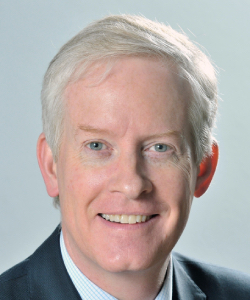Social distancing is not going anywhere anytime soon and crowd detection analytics could be a useful tool to help enforce new guidelines in various environments.
Social distancing, also called physical distancing, has emerged as a new public standard to
help prevent the spread of COVID-19. Enforcing these new rules, though, is a challenge. Crowd detection analytics could help.
Limiting occupancy, crowding
 Chris Bruce, MD,
Chris Bruce, MD,
GlobalReach Technology
Crowd detection analytics can be used to
limit occupancy and detect overcrowding in any environment. Since there is no exception for social distancing, the use of crowd detection could be a vital tool to
help ensure that physical distancing is observed in all settings.
Crowd analytics are most useful when deployed across the entire estate, with particular focus on choke points where people typically queue or gather, said Stuart Mills, COO and Chief Customer Officer at
CrowdVision.
“Our analytics — and the alerts that are triggered if a threshold is breached — can help the venue to predict or identify issues like crowding, pinch-points or queues that risk breaching social distancing guidelines,” Mills explained.
Tom Hofer, Product Manager at
Senstar, pointed to the use of aggregated counting analytics deployed at entrances and exits to help enforce social distancing guidelines. While this approach doesn’t directly address the physical separating between individuals, Hofer explained it can be very helpful to
ensure building or room occupancy limits are followed.
Changing the flow of traffic
Not only can crowd analytics be used to restrict the number of people in an area, but it can also be used to dynamically change routes and the flow of traffic to maintain social distancing.
Bjørn Skou Eilertsen, CTO of
Milestone Systems, explained, “To avoid close contact and congestion in shops and grocery stores, store managers can use one-way detection based on video analytics to warn customers and alert store managers if someone is going in the wrong direction.”
Doing this can also provide store managers with valuable information and statistics about the effectiveness of the implementation of routes they have chosen for their shop, Eilertsen added.
Taking action to social distance
Social distancing and related regulations may vary in different regions and different environments. For this reason, since venue owners know their spaces best, crowd detection use cases will differ, which is why Chris Bruce, MD of
GlobalReach Technology, believes that each venue should be in control of setting their own thresholds.
“Different actions that venues might take include using alerts in a transport scenario to trigger a station or platform closure making sure that passengers and staff maintain social distancing, or to reduce overcrowding on a bus or carriage by alerting the driver that they have reached capacity,” Bruce explained.
Alternatively, venues may be able to
make the visual dashboard available to citizens via a digital display screen in shopping malls or via an app that users can log into, according to Bruce. Doing so would allow citizens to make their own decisions about whether to enter an area or the route to navigate.
Aside from crowd detection analytics and alerts, some solutions, like the one from GlobalReach Technology, further offer venues an audit trail and a history log of the level of footfall density. With this information, venues can make operational decisions about urban spatial planning.
“If necessary, the reports can be used to show authorities the level of social distancing being achieved in an area, and to prove that the venue is taking responsible steps,” Bruce added.
The importance of this information can help release venues from lockdowns, which would require a high degree of confidence from the people most affected (e.g., front-line staff such as teachers, waitresses, shop workers, etc.). Putting crowd detection tools in place provides evidence to these important stakeholders that the venue is doing what it can to protect people.